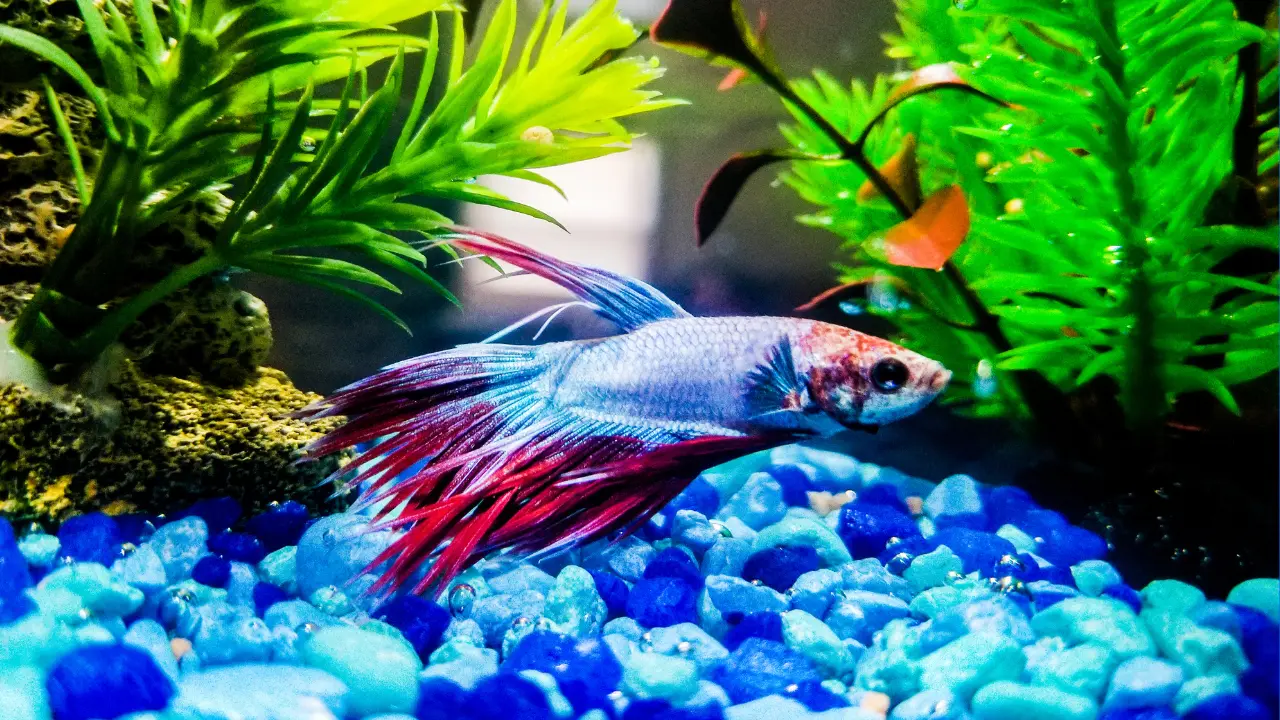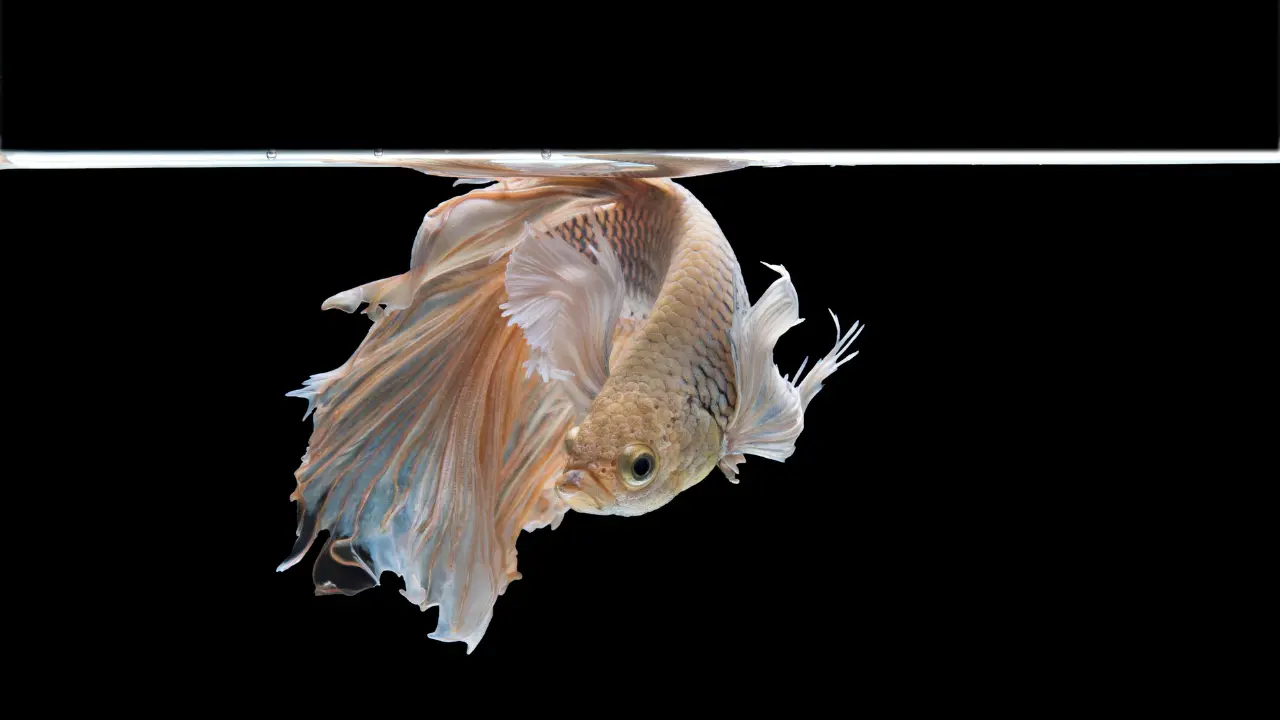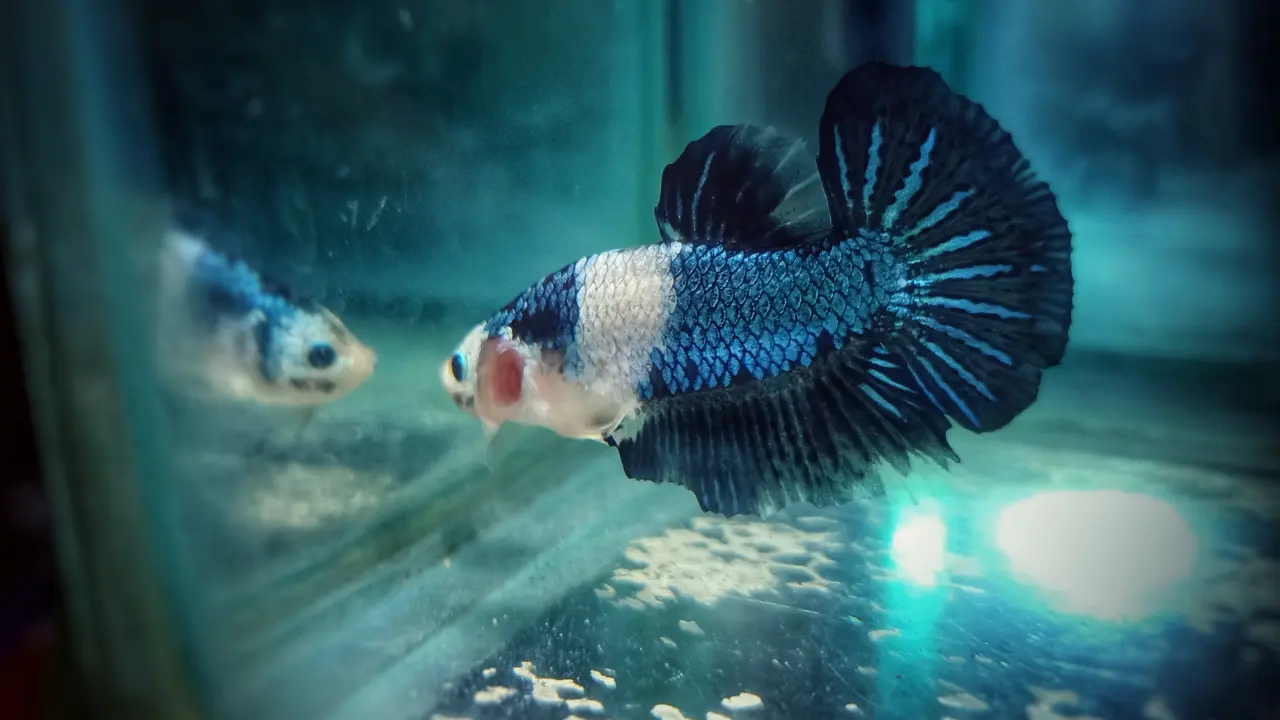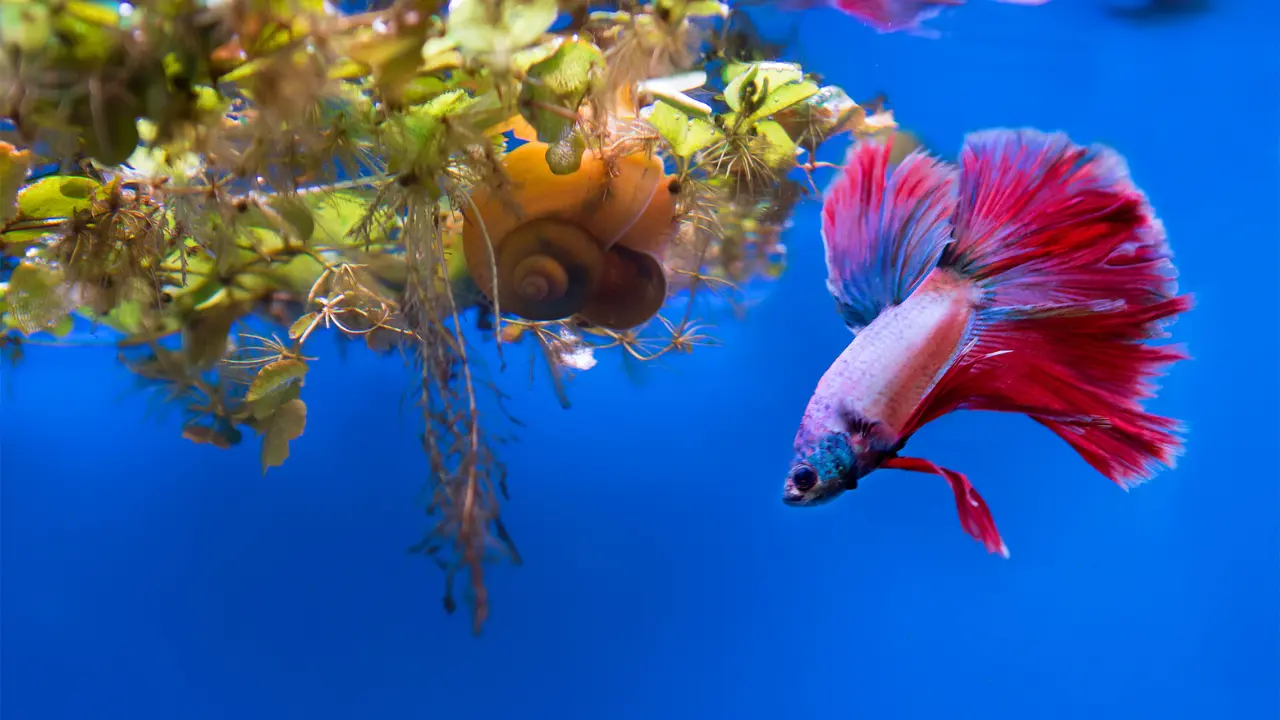We understand how important it is to provide the best care to your beautiful Betta. However, the concerns that come with a Betta’s responsibility can be quite confusing. One of these concerns is the Betta swim bladder problem. This disease is well known to puzzle experts and new hobbyists alike. But fear not! As we take you through the ins and outs of the Betta swim bladder disease, we will arm you with the knowledge you need to defend your betta from the swim bladder disease.
Wondering: why is my Betta fish swimming sideways? It might be the swim bladder disease. Come along as we discuss, how to know if you’re fish has swim Bladder disease.
Today we will cover the causes, treatments, and all that you need to know about swim bladder disease. Along with that, we will also explore treatments to get your Betta healthy and thriving in no time.
Here’s a quick guide to Betta swim bladder disease.
| Name | Swim Bladder/ flip-over/ fish Maw Disease |
| Causes | Overfeeding, gastro problems, infection |
| Symptoms in Fish | Swollen belly, floating, curved spine |
| Behavior Change in Fish | Loss of appetite, sinking, lethargy |
| Curable or Not | Treatable |
| Fatal or Not | Nonfatal |
To get a more in-depth understanding of Betta’s bladder problems, take a look at the article given below.
What Is Swim Bladder Disease ?
Swim bladder disease is common in many fishes. In this condition, an organ of the fish’s body, called the swim bladder malfunctions. Due to this disruption, the fish is unable to maintain its buoyancy. Thus, you might see the Betta fish floating to top of tank, floating upside down, and have problems in swimming.
Many factors can contribute to the cause of swim bladder disease. Some of these include poor water quality, bacterial infection, and overfeeding.

Major symptoms include the Betta floating at the surface and struggling to swim. The general treatment includes adjusting the fish’s diet and improving water conditions. Keep reading for an in-depth overview of the causes and symptoms of swim bladder disease.
In addition, genetics can also cause swim bladder disease. So, don’t go hard on yourself if your Betta gets this disease by chance. Just make sure the water hygiene and condition are ideal. Moreover, test the water regularly to maintain a safe tank with no toxins.
Is Swim Bladder Disease Fatal?
Swim bladder disease is a threat to Betta’s well-being, although it’s not always deadly. However, if left untreated, it can cause infections and serious damage to the fish’s organs. But with proper care and treatment, most of the fish recover from this disease.

While swim bladder disease is not always fatal, it can be a concern of many aquarists. However, by understanding its causes and symptoms, you can prevent and diagnose this disease. To save your fish from getting this disease, maintain a healthy fish care routine. Make sure your fish has a clean and thriving environment, so it doesn’t catch this disease in the first place.
Betta Fish Swim Bladder Symptoms
In general, the Betta fish sinking to bottom of tank or swimming on its side are the most common indicators. Maintaining its position in the tank is also a great hassle for the fish, so it often swims upside down. The fish can also face issues like difficulty eating and loss of appetite.

Given below are the symptoms of Betta fish bladder disease
- Betta floating on side at top of tank.
- Difficulty maintaining position in the water.
- Betta sinks to bottom or swims upside down.
- Changes in appetite or difficulty eating.
- Erratic swimming behavior, such as darting or spinning.
- Constipation and swollen abdomens.
- Lethargy or reduced activity.
- Inflamed or reddened areas around the abdomen.
- Gasping for air at the water’s surface.
- Excessive mucus production or abnormal feces.
The best thing to do is to regularly check if your Betta has these symptoms. After all, you can only cure a disease that you know of. If you observe any of these symptoms, follow our treatment guide below.
Swim Bladder Disease Causes
Various factors cause Betta fish bladder disease. In general, its causes include poor water quality, overfeeding, and bacterial infections. Most of the time, when the fish gulps air from the water’s surface, it disrupts the swim bladder. Moreover, some fish have genetical issues that can cause the swim bladder issue.

Here is a list of common causes of swim bladder issue
- Overfeeding the fish
- Unbalanced Diet
- Overcrowded tank
- sudden temperature fluctuations
- poor tank water quality
- Trauma and shock
- Low water temperature
- swollen abdominal organs
- parasitic or bacterial infection
- Birth defects
For a healthy swim bladder, a healthy fish diet is very important. Feeding a high-fat or high-fiber diet to your fish can cause swim bladder problems.
Tank hygiene is extremely important to prevent this disease. Leftover food and uncleaned fish poo can intoxicate the tank water.
Additionally, factors like temperature fluctuations and stress can also cause swim bladder disease. So, it’s best to keep a healthy fish diet with only enough quantity that a fish can eat in one sitting!
Betta Swim Bladder Treatment
As we have discussed above, swim bladder disease is caused due to many factors. To treat this disease, you must know what’s causing it. First figure out the reason for the swim bladder disease, then treat the fish accordingly. Read the guide below to find out the real culprit that’s causing swim bladder disease.

How to know if it’s an Infection?
If a parasitic infection is causing the swim bladder issue, your Betta will have clamped fins and lethargy. Moreover, your fish might show weird swimming patterns and stop eating any food.
Check for visible signs like redness, swelling, and lesions on the fish’s body. This will confirm if it’s an infection or not.
Treatment
If you are sure that it’s an infection, you should reach out to a veterinarian. To treat the swim bladder disease, follow the guide below.
- Isolate your fish in a separate tank to treat it. This tank should not have any gravel or plants so you can better monitor your Betta.
- Use broad-spectrum antibiotics prescribed by a veterinarian. Use the medication as directed.
- Change 25 percent of tank water daily.
- Use an aquarium air pump to increase oxygen in the water. The antibiotics will significantly reduce the oxygen in the tank.
- Additionally, slightly increasing the temperature will enhance the immune response
- Follow the same practice for the prescribed number of days.
- Monitor the fish and its behavior. adjust the treatment according to the response of the fish, if possible.
Never use salt in the tank to treat swim bladder disease. Salt is effective in getting rid of infections caused by bacteria although it isn’t much help in case of parasitic infections.
How to know if it’s gastrointestinal issues?
If indigestion is causing the swim bladder disease, your fish can have bloating and constipation. Moreover, an engorged stomach and abnormal feces are indicators of stomach problems as well. Look out for these symptoms to confirm if the real culprit is a gastro issue.
Treatment
If you are sure that it’s a gastro issue, follow the guide given below to treat your fish
- Stop feeding your Betta for 3 days. fasting your fish will allow its digestive tract to clear out any leftovers.
- You don’t need to isolate your fish, just take it out for some time when feeding other tankmates.
- Slightly increase the water temperature. This will accelerate your fish’s immune response and metabolism.
- After the third day, feed your fish some fiber-rich food like daphnia. Additionally, don’t feed dry foods like pellets and flakes for some days.
Some people might suggest feeding peas to your Betta. However, peas are only good for treating constipation, it works as a laxative.
By following this guide and providing proper care and attention, your fish will be happy and healthy in no time!
Supportive Therapy
Supportive therapy is a special treatment for fish with swim bladder issues. In supportive therapy, you isolate the affected fish in a tank with optimal conditions. Moreover, antibiotics are used to target the cause of the swim bladder issue. In essence, the ideal parameters that aid the recovery of the fish are provided.

Additionally, to maintain optimal water quality, regular water changes are required. An air pump is also required for a sufficient supply of oxygen. The tank temperature is also increased to accelerate the fish’s metabolism and immunity.
In supportive therapy, we combine medication and tank adjustments to accelerate the recovery. Supportive therapy and proper attention can ensure your fish’s quick recovery.
Prevention of Swim Bladder Disorder in Bettas
The best way to prevent swim bladder disease is to provide optimal water conditions. Keep all the water parameters ideal and make sure the tank is clean. Regularly change 25 percent of the tank water, it’ll provide your betta with some fresh water.

Moreover, avoid overfeeding your Betta because extra food leads to digestive issues. Only feed your Betta twice a day and make sure the diet is of high quality. Maintain a healthy amount of food that the fish can finish in 2 to 3 minutes, without leaving leftovers. Always track your fish’s eating habits and adjust the dietary routine accordingly.
Stressors can cause swim bladder disease as well, so make sure there are none. Betta fish are very sensitive to their surroundings and get stressed very easily. So, it’s best to avoid overcrowding, bright lighting, and aggressive tankmates. You should also have a lot of hiding spots and plants in the tank, it helps to relieve the stress.
You should maintain a stable water temperature of about 75 to 89 degrees Fahrenheit. Use a good water heater and a thermometer. Monitor the water temperature and avoid fluctuations. Get a filter to maintain optimum oxygen levels in the tank. Just like you, Oxygen is Vital for Betta’s Happiness!
Additionally, the Betta must have an appropriate tank size and shape. Go for a tank of 5 gallons or more, remember that it should be longer than its height. With adequate space and proper care, a Betta can prevent swim bladder disease. After all, it’s better to prevent a disease than to get it treated.
FAQ’s
Is swim bladder disease contagious ?
No, swim Bladder disease is not contagious although it’s best to isolate your fish in a separate tank. This will help you monitor the fish’s progress. Also, in a separate tank, there won’t be any tankmates to disturb the affected fish.
Why is my Betta sinking ?
If you’re seeing your Betta fish sinking to bottom of tank, it could be the Betta swim bladder disease. Check for other symptoms given in the article above.
is swim bladder disease painful for fish ?
No, swim bladder disease isn’t considered to be painful for the fish. However, the underlying reasons that cause swim bladder disease, like constipation and infections might cause the fish to feel discomfort. Overall, the fish can’t eat or swim so it is pretty concerning for the fish’s health.
Betta swim bladder disease symptoms ?
The major symptoms of swim bladder disease include the fish sinking to the tank bottom, lethargy, swollen abdomen, and difficulty eating food. check the article above for more Betta swim bladder disease symptoms and indications.
what causes swim bladder in betta fish ?
There can be a variety of reasons that cause swim bladder disease. Sometimes it’s genetic, sometimes it’s a stomach issue or infection. In some cases, the fish itself causes the swim bladder disease. It goes to the surface and takes a big gulp of air. This causes swim bladder disease.
Conclusion
So that was all about the swim bladder disease in betta fish. In essence, to take good care of your fish you should know about the potential diseases. After all, you can only treat a disease that you know about!
Today we discussed the Betta swim bladder disease symptoms and causes, along with its treatment. The most common symptoms include your fish floating abnormally in the tank. Moreover, the fish will experience lethargy and difficulty to eat food.
To treat this issue, you should know what’s the underlying cause. After figuring that out follow our guides given above to treat your Betta. However, it’s better to take a trip to the vet’s clinic.
we’d love to hear what you think about the swim bladder disease. Share your queries and thoughts in the comments below!

